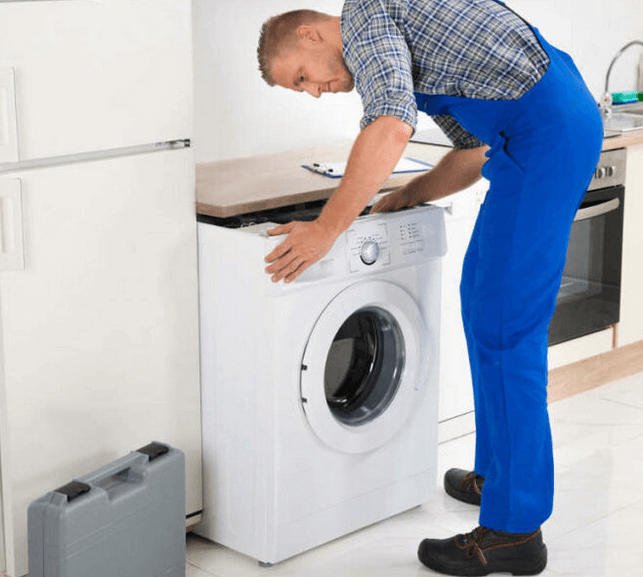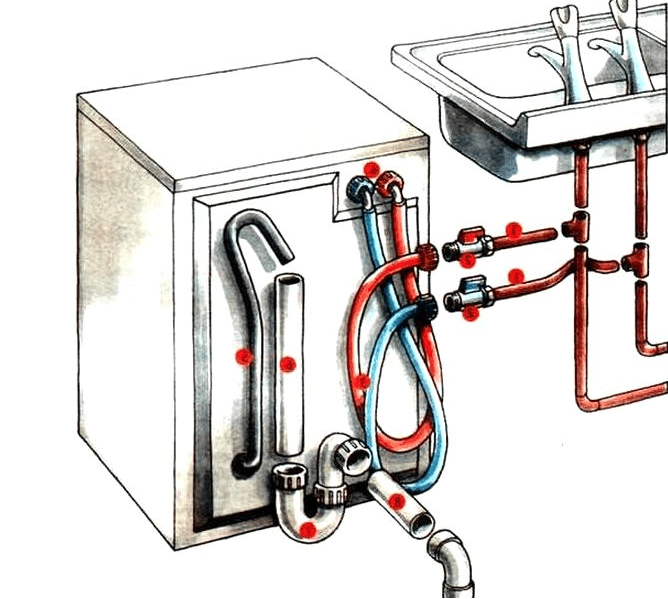The washing machine has become an integral part of a modern apartment or house, because it greatly facilitates the life of every family. However, for its connection and normal functioning, it is necessary to connect a special tap for the washing machine.
If, after self-connection washing machine does not turn on, then you should not worry, just call a wizard who will help troubleshoot.

To connect the "washer" you need the following:
- Faucet for washing machine. In most cases, this is a BP valve (internal thread) to an HP (external thread).
- Sealing material. Here you can choose from: fum-tape, sealing paste or tow + sealant.
- Adjustable or pipe wrench.
- PP sewer tee for 50 mm. (may not be needed)
- Adapter ring 50/40 mm.
- Inlet hose. As a rule, it comes with a washing machine.
- Drain hose. It also usually comes with a set.
- Rag or rag.
All connection of the washing machine takes place in several stages:
- The first step is to turn off the cold water. Otherwise, the flood cannot be avoided. In new buildings and relatively new houses, this can be done directly to the apartment. Most often, these taps are in the toilet room.
- Next, you need to open a tap with cold water - this will relieve pressure and water will flow out (although, most likely, not all).
- The next step is to apply the sealant. Again, if the apartment is more or less new, then a tee with a plug should already be installed there. It is intended just for the tap under the "washer". This plug will need to be unscrewed with a key. Then, with a rag, remove excess moisture from the threads of the tee. It's time for the sealer.It is most convenient to use fum tape. For safety, it is necessary to wind 2 or 3 times on the thread clockwise.

If suddenly the tee is not there, then it will be necessary to cut a segment on the pipe to install the tee there. With polypropylene pipes, everything is simpler, but a welding machine will be needed to weld PP pipes. A combined tee with an external outlet of 1/2 inch is soldered into the cut segment. Actually, after the end of the soldering procedure, a “fumka” is wound on the thread of the tee.
Everything is a little more complicated if the pipes are metal. Here you will need to tinker a little more. To begin with, threads are cut on both cut edges with the help of screws. Then a fum tape is wound on the thread and a tee is screwed in, also with a 1/2 outlet. And a sealant is applied to the branch.
- The hardest part is over. Now you need to turn on the faucet. This is done using a pipe or adjustable wrench.
- Next, the inlet hose is wound onto the faucet for the washing machine. The thread on the tap can not be sealed, since there are gaskets on the inlet hoses. They are enough.
- It's time to install the drain hose. Again, most often, a hole was provided in advance for draining water from the “washer”. If the tee is in place, then all you need to do is pull out the plug, insert the adapter ring, and then plug in the drain hose.
In the absence of a tee, it will be necessary to disassemble the drain system, find a place for the tee. The resulting excess piece of pipe can be cut with a regular hacksaw. When everything is reinstalled, you need to put the adapter ring and stick the drain hose.
7. You need to turn on the water and check if it is leaking anywhere. If not, you can use the machine.
Thus, connecting a washing machine is not too tricky. And it is not necessary to have special skills for this.
